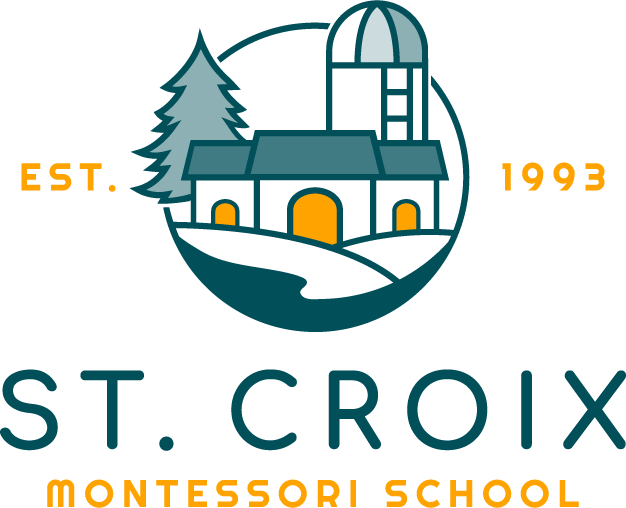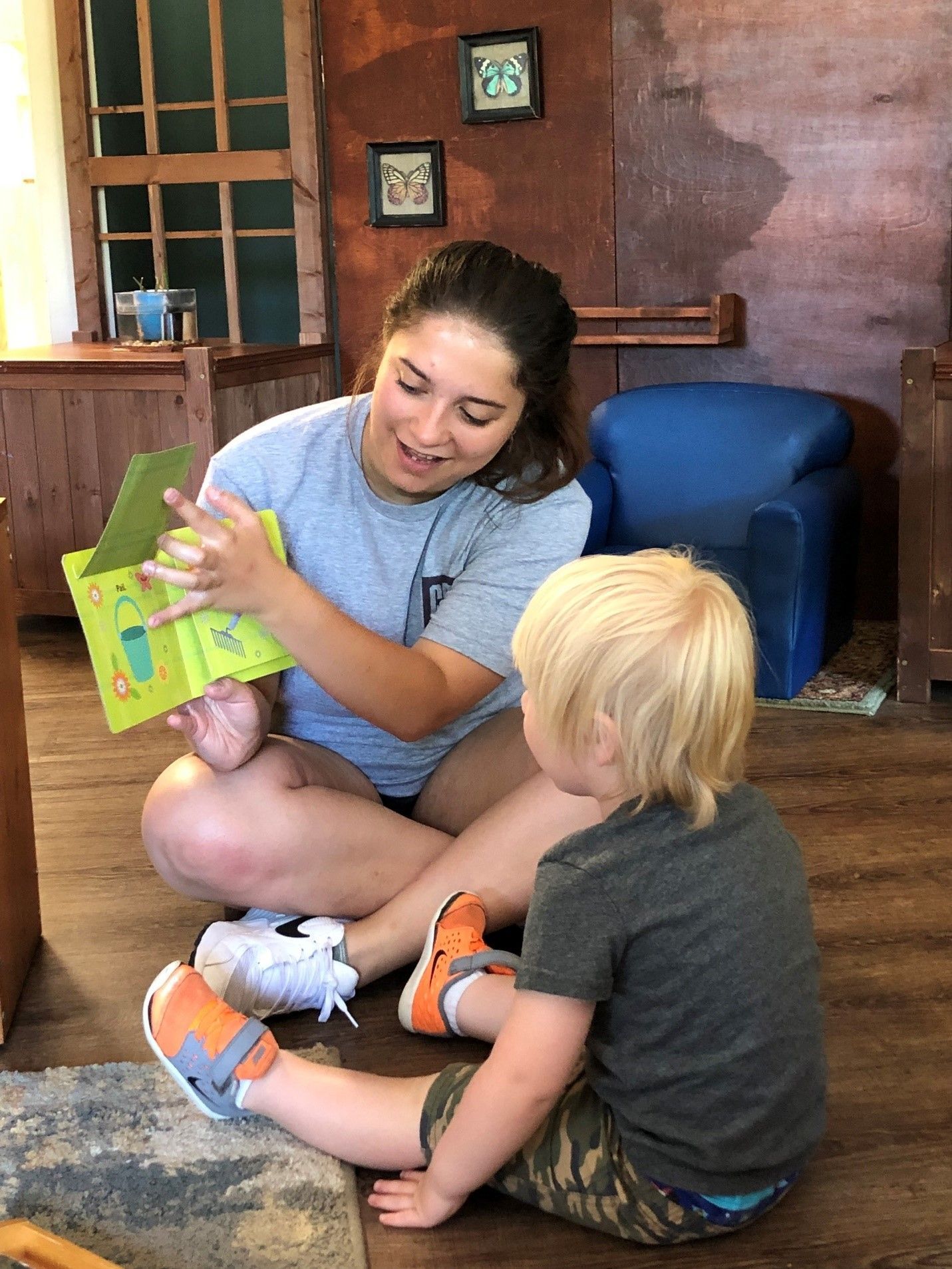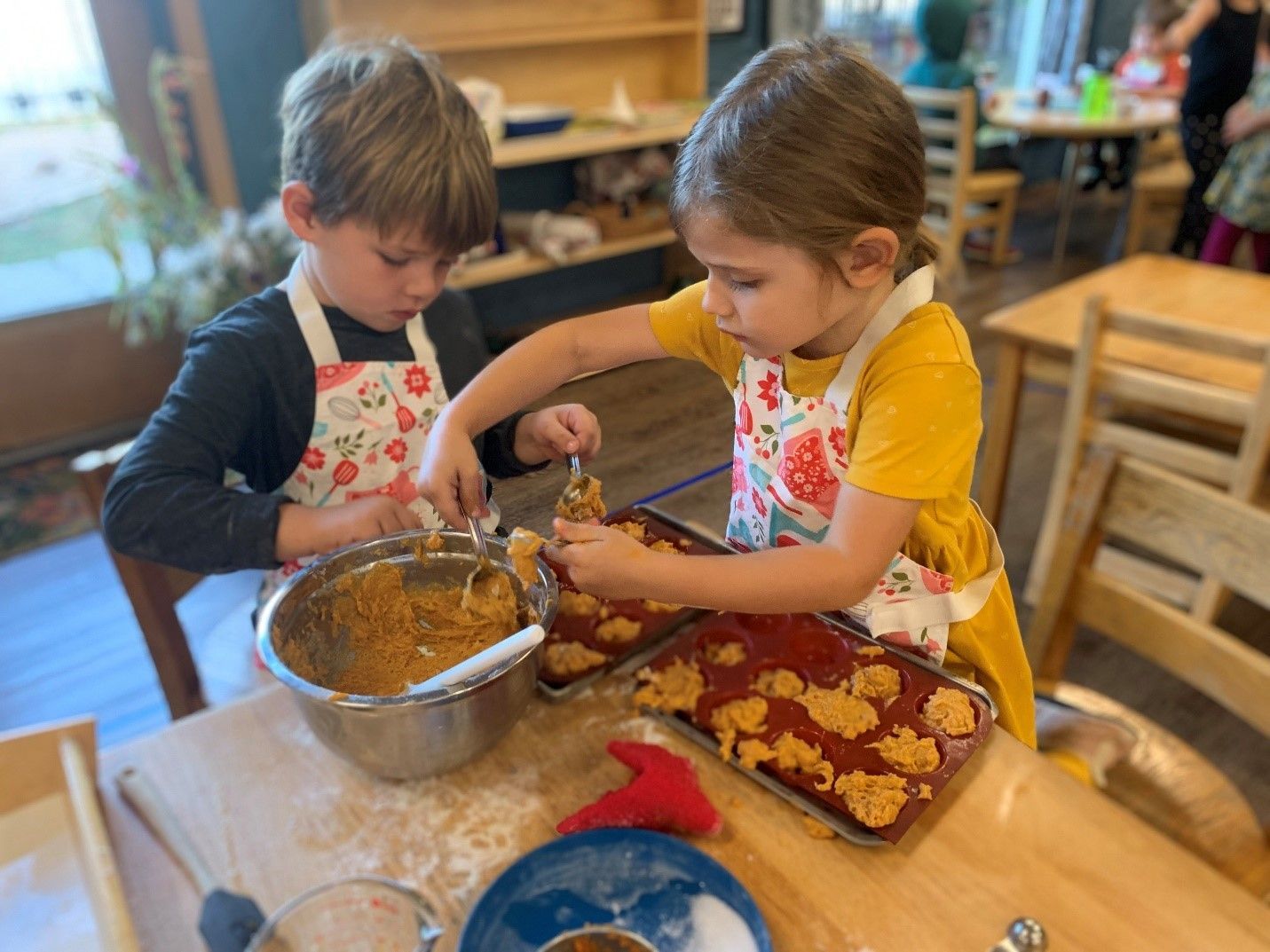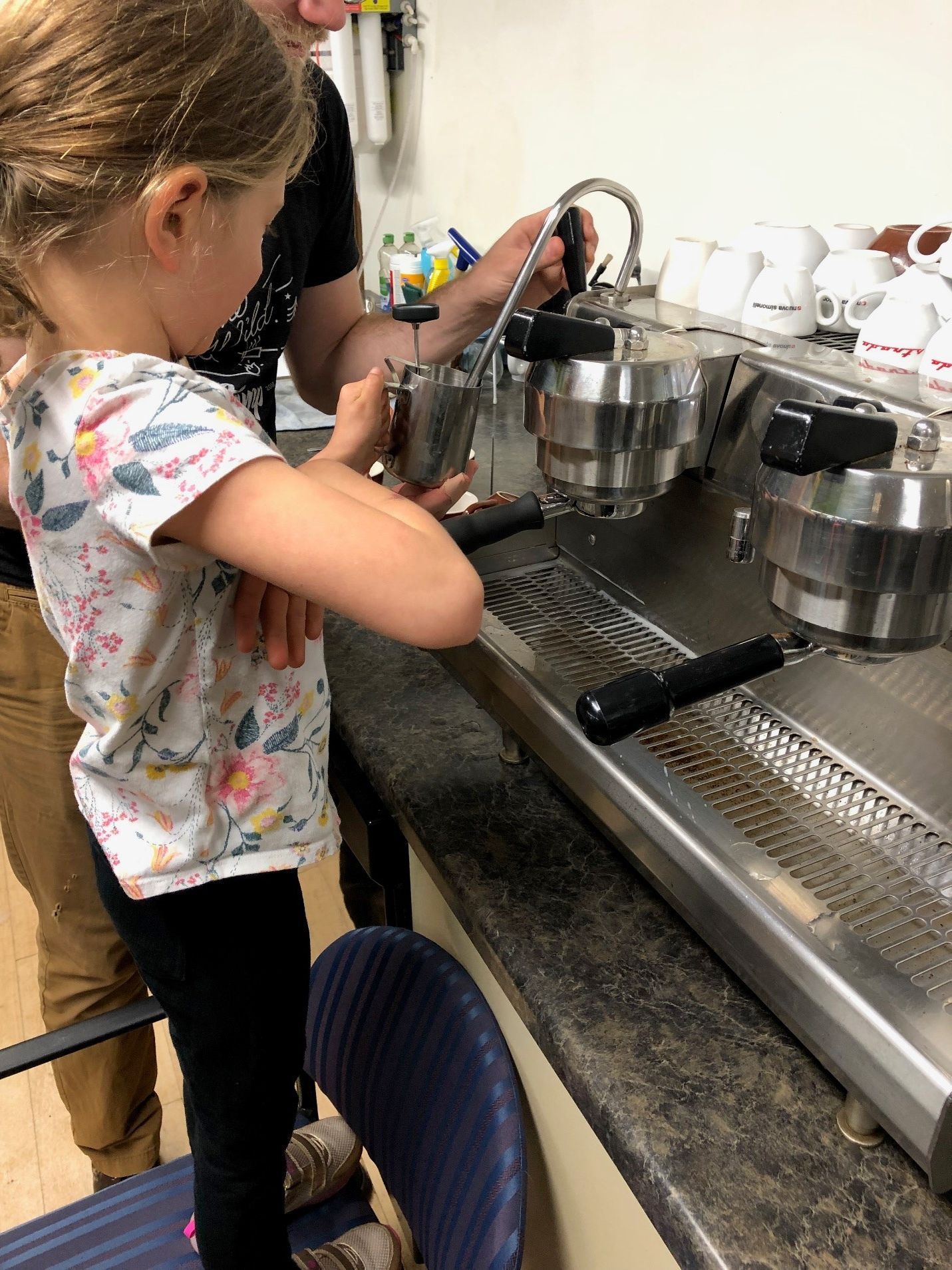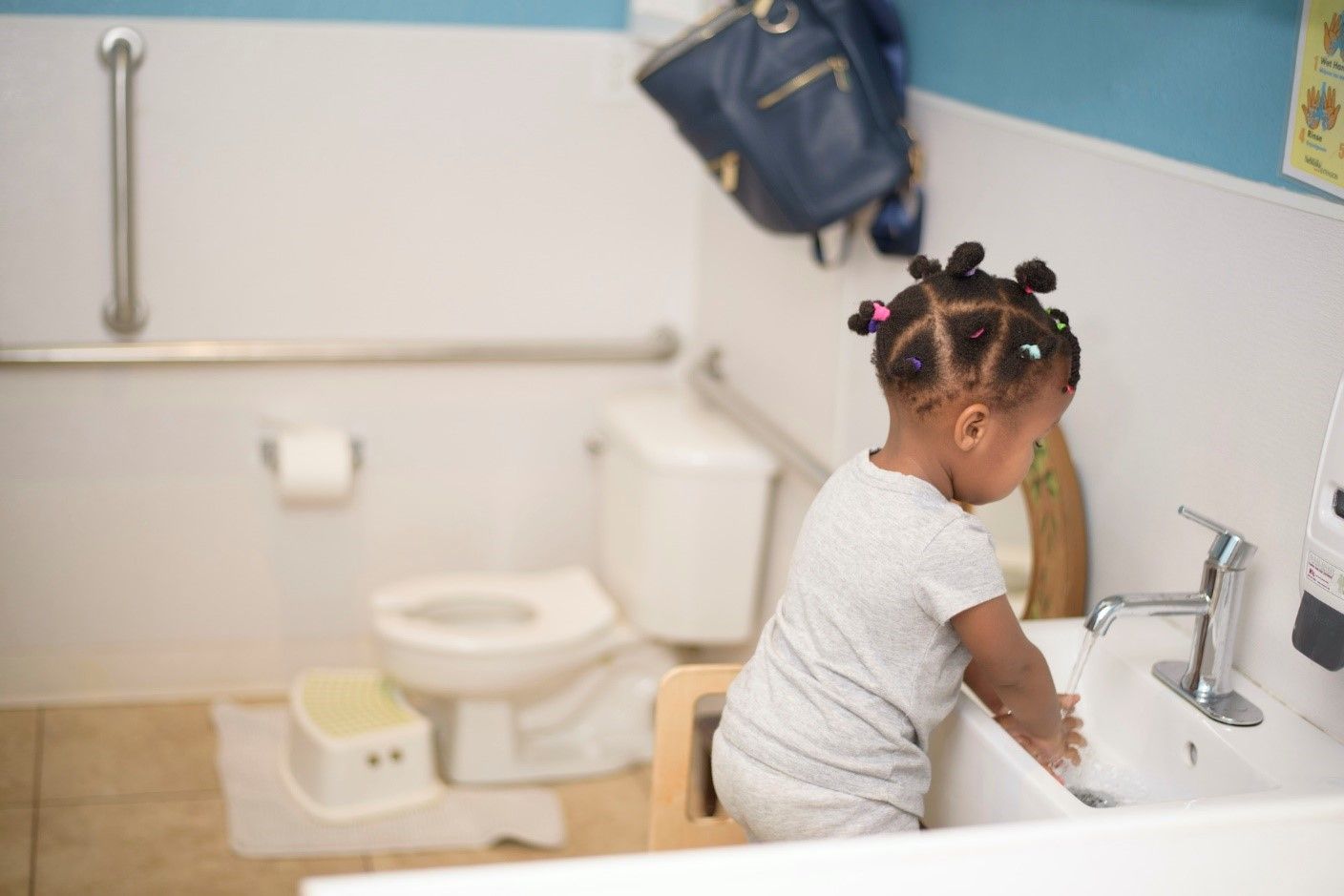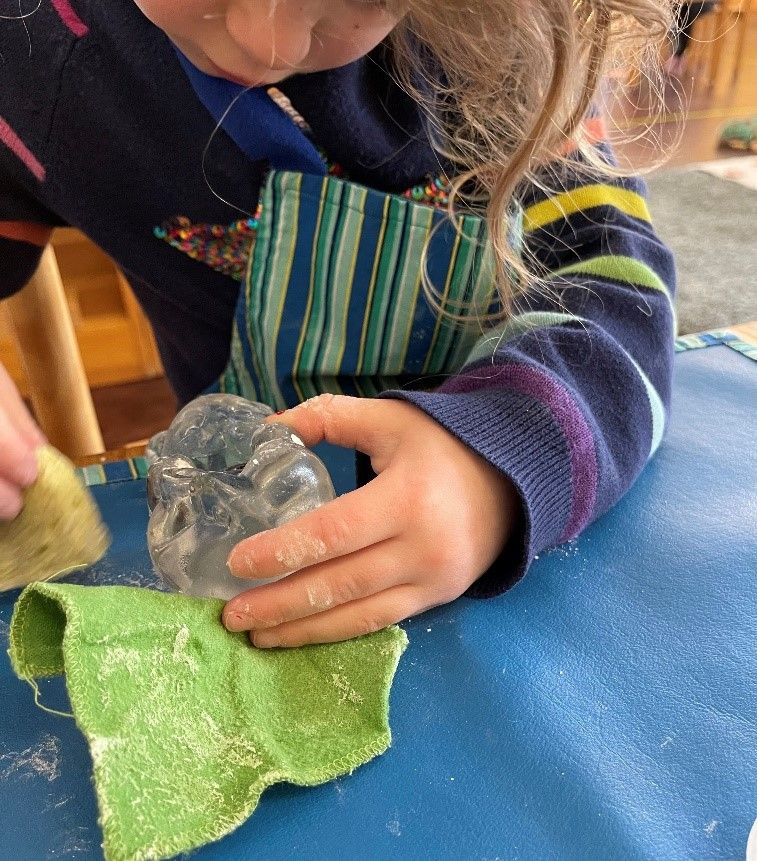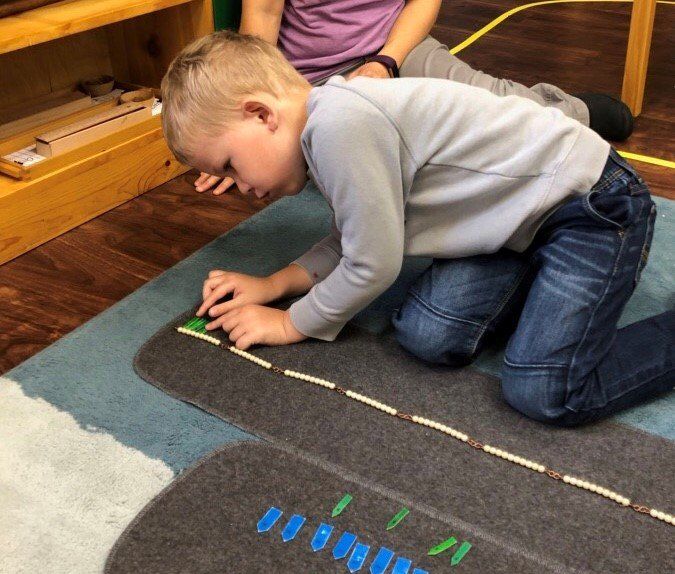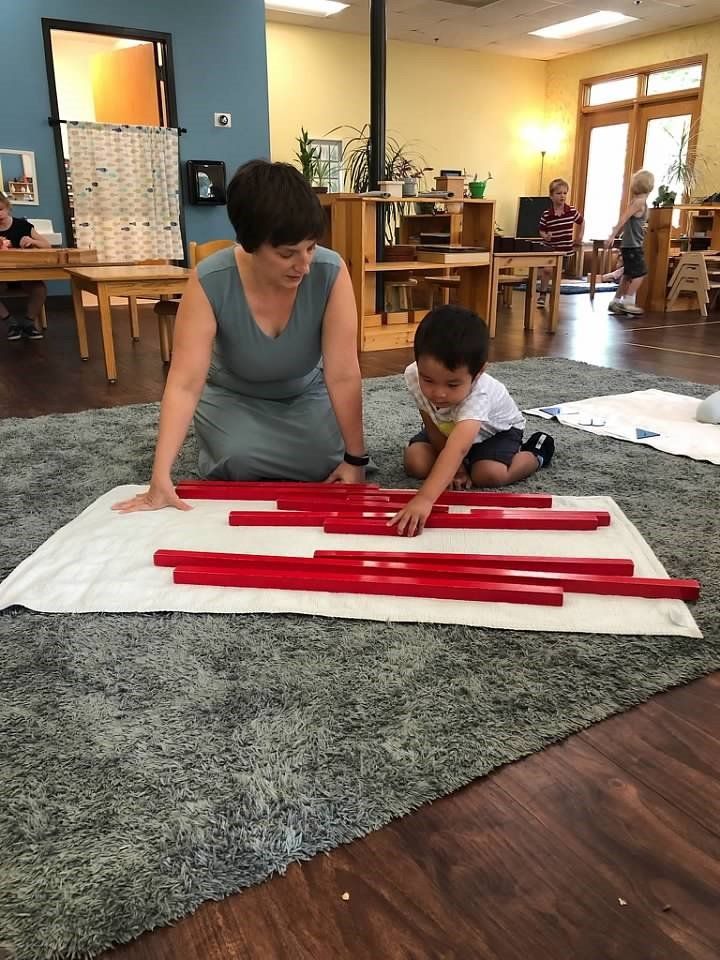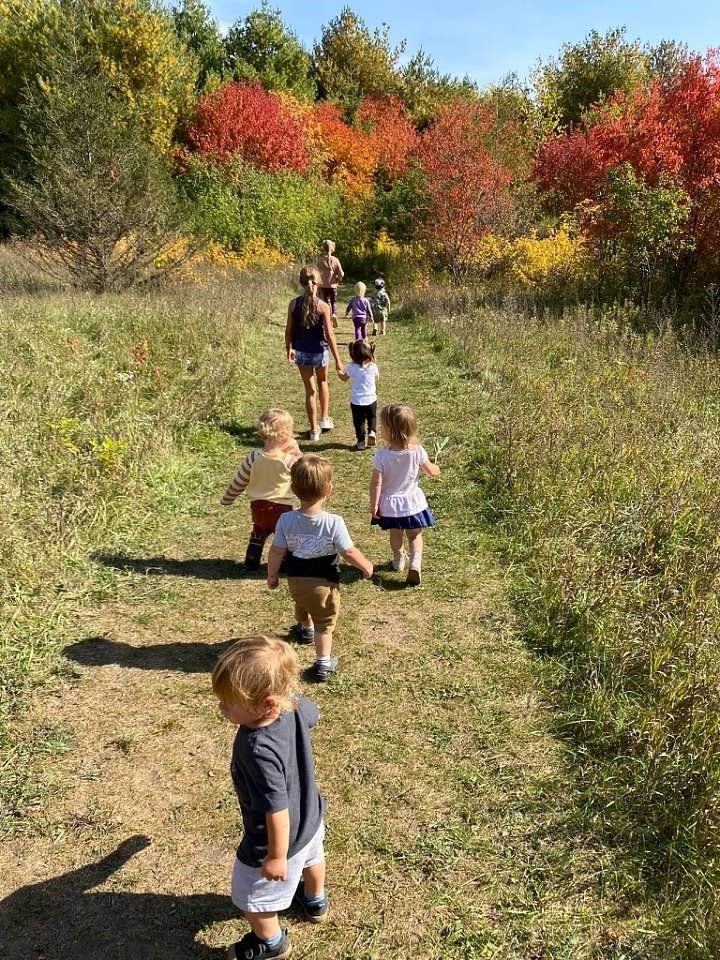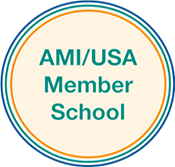Blog Layout
The Language Curriculum
St. Croix Montessori School • September 30, 2021
Have you ever wondered how Montessori guides teach children about language? Parents are often astounded when they observe children learning to read at a young age in our schools. What’s the secret?
There’s no secret - we’re happy to share our methods! Read on to learn more about our approach, how we align our teaching with a child’s natural development, and what the progression looks like as children get older.
Early Language Activities
Children’s language development begins long before they enter the classroom. Dr. Montessori asserted that children from birth to age 6 were in the age of the absorbent mind. During this time they are able to learn language simply by living around others who are using language. Montessori classrooms incorporate both spoken and written language into the environment to further enrich this early learning.
In our primary classrooms we teach children songs and poems so that they may hear and experience language in a fun and playful way that appeals to them. We encourage parents to do the same! Share poems from your childhood with your children and discover new ones together. Sing your favorite songs from when you were little, or enjoy child-friendly music from musicians such as Raffi or Tom Chapin.
Montessori guides introduce children to as much vocabulary as possible in their early years. This may start with naming objects around the classroom and also expand toward specialized nomenclature. Children learn the names of the continents, plant and animal names, and specific terms that apply to areas of interest. These vocabulary words are spoken and shown in written form.
Writing
Writing is introduced earlier in Montessori classrooms than in many other settings. Consider the goal of writing: to visually communicate one’s ideas with others using standardized symbols. This is actually separate from the ability to hold a pencil and form strings of letters, words, and sentences on a piece of paper.
Once a child has a basic understanding of most of the letter sounds, they begin to use a material called the moveable alphabet. Exactly what it sounds like, the moveable alphabet is a box containing sorted wooden letters. Children lay the letters out to write words, and eventually sentences. At this stage we do not expect children to conform to conventional spelling, but rather we allow what is often referred to as inventive spelling. “I love my mom” may look like “I luv mi mom”.
Montessori classrooms use many materials to help children strengthen their finger muscles in preparation for the physical act of handwriting beginning at age 3, or arguably even earlier. Our experience has taught us that children are ready to express themselves in writing before they are ready to start writing in the traditional sense. That pencil-to-paper writing usually starts in kindergarten, though it varies with individual children.
Reading
One beautiful material that you have likely seen is called the sandpaper letters. The letters are used to teach both reading and writing.
It’s important to note that when Montessori guides begin introducing children to letters, the focus is on the sounds the letters make and not their names. This means we do not teach the alphabet song, because knowing the names of letters isn’t really helpful in learning how to read. That’s not to say there is no value in such learning; it will certainly come in handy when learning to alphabetize, or when talking about letters when they are a bit older. We just want parents to know that if you want to continue the work we do in our classrooms, consider using a letter’s most commonly used sound when referring to it.
An example: when a Montessori child learns to spell cat, they will say, “k-ah-t” rather than “see-ay-tee”.
Object boxes are used to help children learn to read as well. An object may contain tiny, often beautiful versions of a pig, pumpkin, rat, etc. Children discover that they are able to match the objects by reading the label cards.
Much of our reading work is done while teaching children other subjects. For example, if they are learning about mammals, they will read lots of text at their level about mammals.
Card materials are also used as children progress, allowing guides to help children isolate specific sounds and blends. One series of cards/lessons may focus on the various ways to make a long a sound. One color of cards displays words containing ai, another will contain ay, and yet another will teach children about words with the silent e.
Card materials are also used as children progress, allowing guides to help children isolate specific sounds and blends. One series of cards/lessons may focus on the various ways to make a long a sound. One color of cards displays words containing ai, another will contain ay, and yet another will teach children about words with the silent e.
Word Study
This area of study includes a wide variety of skills and begins once a child has begun to read; some of the earlier lessons are given during the final (kindergarten) year of primary, but many are given during the first two years of lower elementary. The guide will give the child a lesson teaching the skill. In the days and weeks following, children practice the skill independently using special card materials. The skills include:
● Classification
● Alphabetizing
● Compound words
● Synonyms
● Antonyms
● Prefixes
● Suffixes
Grammar
Grammar is taught early and in what we call a spiraling curriculum; that is, we circle back on the same content as the child gets older, building on previous knowledge and giving more depth to their understanding. Parts of speech are taught in a very specific order, and each one has a corresponding symbol that children use in many activities.
Beginning in the final year of primary, children typically learn about nouns, articles, and verbs, as well as their corresponding symbols. This helps them to understand the core parts of our sentences and gives them an introduction to grammar in a way that appeals to them.
Sometime during that final year in primary children are introduced to grammar through what we call the function of words. Traditionally, a model of a farm, complete with animals, is used to guide children through the process. Again, they begin by learning that nouns are naming words, and they name each animal and feature of the farm. They then go on to learn the corresponding articles, followed by all other parts of speech, including adjectives, verbs, adverbs, pronouns, conjunctions, prepositions, and interjections.
Once a child has learned the functions of words, they will move on to the Montessori grammar command cards. Knowing that children learn by doing, these cards give children specific directions to physically follow so that they may experience the words for themselves.
There are many extensions to grammar work that Montessori children enjoy. Some will write their own sentences and label each word with its corresponding grammar symbol. Others enjoy using grammar strips: a material that shows a series of grammar symbols which students must use a guide to write a sentence with that particular pattern.
Sentence Analysis
Going beyond grammar, elementary-aged children learn to analyze sentences. This begins simply with subjects, verbs, direct, and indirect objects. As children get older and have a better grasp on language, the work extends considerably.
Older elementary children learn about complex sentence structures. This includes structures like predicate adjectives and nominatives, attributive adjectives, various types of phrases and clauses, and many more.
As always, we believe in the power of observation, and we invite you all to schedule a time to sit and observe in one of our classrooms.
There’s no secret - we’re happy to share our methods! Read on to learn more about our approach, how we align our teaching with a child’s natural development, and what the progression looks like as children get older.
Early Language Activities
Children’s language development begins long before they enter the classroom. Dr. Montessori asserted that children from birth to age 6 were in the age of the absorbent mind. During this time they are able to learn language simply by living around others who are using language. Montessori classrooms incorporate both spoken and written language into the environment to further enrich this early learning.
In our primary classrooms we teach children songs and poems so that they may hear and experience language in a fun and playful way that appeals to them. We encourage parents to do the same! Share poems from your childhood with your children and discover new ones together. Sing your favorite songs from when you were little, or enjoy child-friendly music from musicians such as Raffi or Tom Chapin.
Montessori guides introduce children to as much vocabulary as possible in their early years. This may start with naming objects around the classroom and also expand toward specialized nomenclature. Children learn the names of the continents, plant and animal names, and specific terms that apply to areas of interest. These vocabulary words are spoken and shown in written form.
Writing
Writing is introduced earlier in Montessori classrooms than in many other settings. Consider the goal of writing: to visually communicate one’s ideas with others using standardized symbols. This is actually separate from the ability to hold a pencil and form strings of letters, words, and sentences on a piece of paper.
Once a child has a basic understanding of most of the letter sounds, they begin to use a material called the moveable alphabet. Exactly what it sounds like, the moveable alphabet is a box containing sorted wooden letters. Children lay the letters out to write words, and eventually sentences. At this stage we do not expect children to conform to conventional spelling, but rather we allow what is often referred to as inventive spelling. “I love my mom” may look like “I luv mi mom”.
Montessori classrooms use many materials to help children strengthen their finger muscles in preparation for the physical act of handwriting beginning at age 3, or arguably even earlier. Our experience has taught us that children are ready to express themselves in writing before they are ready to start writing in the traditional sense. That pencil-to-paper writing usually starts in kindergarten, though it varies with individual children.
Reading
One beautiful material that you have likely seen is called the sandpaper letters. The letters are used to teach both reading and writing.
It’s important to note that when Montessori guides begin introducing children to letters, the focus is on the sounds the letters make and not their names. This means we do not teach the alphabet song, because knowing the names of letters isn’t really helpful in learning how to read. That’s not to say there is no value in such learning; it will certainly come in handy when learning to alphabetize, or when talking about letters when they are a bit older. We just want parents to know that if you want to continue the work we do in our classrooms, consider using a letter’s most commonly used sound when referring to it.
An example: when a Montessori child learns to spell cat, they will say, “k-ah-t” rather than “see-ay-tee”.
Object boxes are used to help children learn to read as well. An object may contain tiny, often beautiful versions of a pig, pumpkin, rat, etc. Children discover that they are able to match the objects by reading the label cards.
Much of our reading work is done while teaching children other subjects. For example, if they are learning about mammals, they will read lots of text at their level about mammals.
Card materials are also used as children progress, allowing guides to help children isolate specific sounds and blends. One series of cards/lessons may focus on the various ways to make a long a sound. One color of cards displays words containing ai, another will contain ay, and yet another will teach children about words with the silent e.
Card materials are also used as children progress, allowing guides to help children isolate specific sounds and blends. One series of cards/lessons may focus on the various ways to make a long a sound. One color of cards displays words containing ai, another will contain ay, and yet another will teach children about words with the silent e.
Word Study
This area of study includes a wide variety of skills and begins once a child has begun to read; some of the earlier lessons are given during the final (kindergarten) year of primary, but many are given during the first two years of lower elementary. The guide will give the child a lesson teaching the skill. In the days and weeks following, children practice the skill independently using special card materials. The skills include:
● Classification
● Alphabetizing
● Compound words
● Synonyms
● Antonyms
● Prefixes
● Suffixes
Grammar
Grammar is taught early and in what we call a spiraling curriculum; that is, we circle back on the same content as the child gets older, building on previous knowledge and giving more depth to their understanding. Parts of speech are taught in a very specific order, and each one has a corresponding symbol that children use in many activities.
Beginning in the final year of primary, children typically learn about nouns, articles, and verbs, as well as their corresponding symbols. This helps them to understand the core parts of our sentences and gives them an introduction to grammar in a way that appeals to them.
Sometime during that final year in primary children are introduced to grammar through what we call the function of words. Traditionally, a model of a farm, complete with animals, is used to guide children through the process. Again, they begin by learning that nouns are naming words, and they name each animal and feature of the farm. They then go on to learn the corresponding articles, followed by all other parts of speech, including adjectives, verbs, adverbs, pronouns, conjunctions, prepositions, and interjections.
Once a child has learned the functions of words, they will move on to the Montessori grammar command cards. Knowing that children learn by doing, these cards give children specific directions to physically follow so that they may experience the words for themselves.
There are many extensions to grammar work that Montessori children enjoy. Some will write their own sentences and label each word with its corresponding grammar symbol. Others enjoy using grammar strips: a material that shows a series of grammar symbols which students must use a guide to write a sentence with that particular pattern.
Sentence Analysis
Going beyond grammar, elementary-aged children learn to analyze sentences. This begins simply with subjects, verbs, direct, and indirect objects. As children get older and have a better grasp on language, the work extends considerably.
Older elementary children learn about complex sentence structures. This includes structures like predicate adjectives and nominatives, attributive adjectives, various types of phrases and clauses, and many more.
As always, we believe in the power of observation, and we invite you all to schedule a time to sit and observe in one of our classrooms.
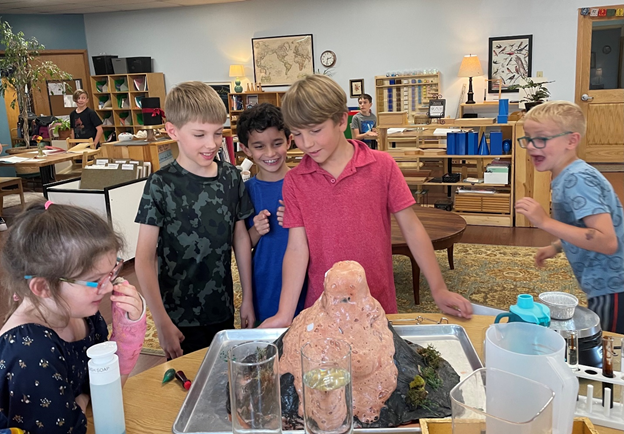
By St. Croix Montessori School
•
October 10, 2022
When children enter a Montessori elementary classroom around age six, they have undergone a great transformation. Whereas they previously wanted and needed to explore their immediate environment on a sensorial level, now they want and need to explore by using their intellect and imagination. The study of geography takes on a whole new meaning at this age when children are fascinated by the smallest particles and the largest stars. They want to know why the seasons differ in the Northern and Southern Hemispheres. They are curious about what made the Grand Canyon. They want to know why ocean currents affect the weather. This desire to know why propels children to discover relationships and functions, not just learn facts. They are also fascinated by the extreme and the outstanding. They are drawn to the very large and the very small. They ask Why? What for? How is this related? The Universe Elementary-age children have a consuming interest in everything! To cater to this all-embracing thirst for the reasons of everything, we begin with the universe. One of the earliest lessons we introduce is the story of the universe. From this first story, children are delighted by a myriad of lessons and activities which fall under the general heading of ‘geography.' Beginning with the universe gives elementary children a big-picture context. In Montessori, rather than encountering bits of disconnected knowledge, children learn about the order and harmony of the universe, as well as the relationships that exist between all things. “If the idea of the universe be presented to the child in the right way, it will do more for him than just arouse his interest, for it will create in him admiration and wonder, a feeling loftier than any interest and more satisfying. The child's mind then will become fixed and can work. The knowledge he then acquires is organized and systematic; his intelligence becomes whole and complete because of the vision of the whole that has been presented to him and his interest spreads to all, for all are linked and have their place in the universe on which his mind is centered.” — Dr. Maria Montessori, To Educate the Human Potential. Constructing Understanding Dr. Montessori observed that children around the world tended to ask similar questions at this age. The geography presentations and lessons support these fundamental reoccurring questions. Our goal is to help elementary children have an explosion into understanding. However, this kind of understanding does not come from adults explaining everything. Instead, we give children experiences and just enough information so they can find out more and make associations. When children make their own connections, real and lasting understanding happens. Even better, the children respond with enthusiasm and excitement! Geography Topics Children in a Montessori classroom do not encounter subjects grouped under curricular headings. Subjects are integrated because children are building their minds. They are exploring their world, rather than the chapters of a textbook. Although there is a structure in the classroom environment, children have the opportunity to explore different many different aspects of geography including: Space, Earth, and the Universe Composition of the Earth Nature of the Elements Sun and Earth Work of Air Work of Water Life on the Land Interdependencies Economic Geography The lessons we present, and the resulting children’s explorations, lead into astronomy, physics, chemistry, meteorology, geology, and more. For example, as we look more closely at how the earth revolves around the sun, children learn about solstices and seasons, climatic zones, and flora and fauna found in particular regions. Aids to Understanding For each topic, we provide imaginative aids, often in the form of stories, colorful impressive charts, and a variety of experiments. Many of these instructive aids have been selected to provide impressions, not just facts. The aim of our geography presentations is to intrigue the children and spark their imagination. We want them to be inspired to find out more! We concentrate on giving key information, discussing reasons, and illustrating details, all of which draw children’s attention to certain phenomena. Once interest is there, children want to learn as much as they can. It is as if we are giving elementary students keys to knowledge and understanding. Once they have the keys, they can open doors and continue their explorations. Geography is a vibrant aspect of the Montessori elementary and generates spontaneous, active, self-renewing interest! A love of learning blossoms in the children, and many develop a lifelong fascination with elements of geography. We invite you to visit our school to learn more about our Montessori approach to Elementary Education.
PROGRAMS
© 2025
St. Croix Montessori School
© 2025
Nido Montessori School
